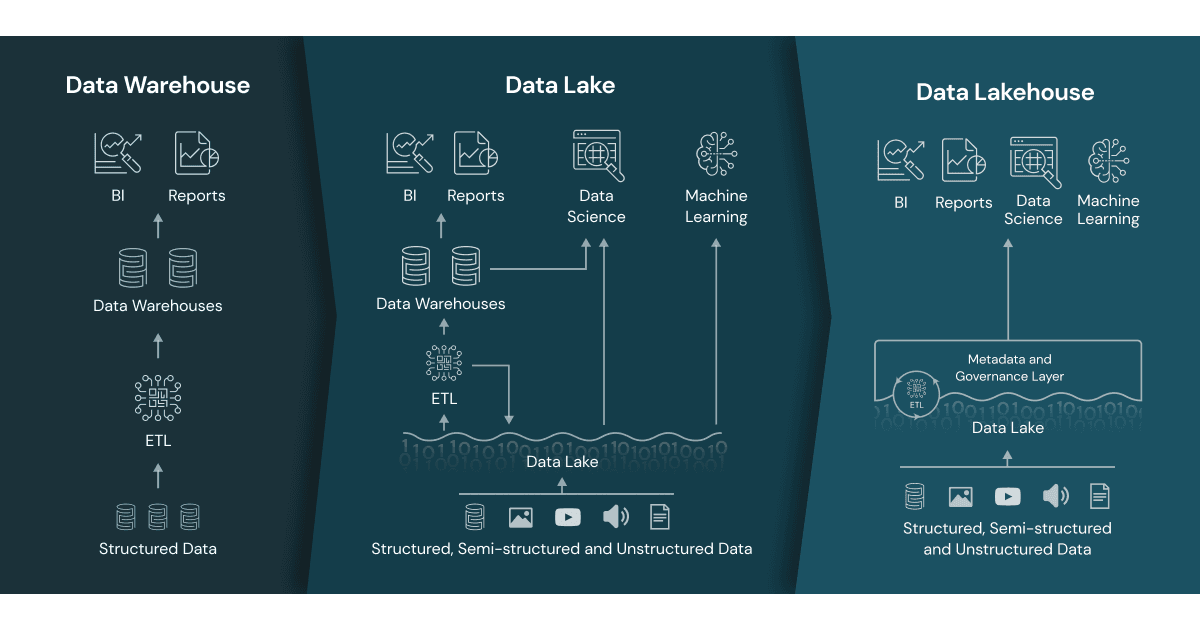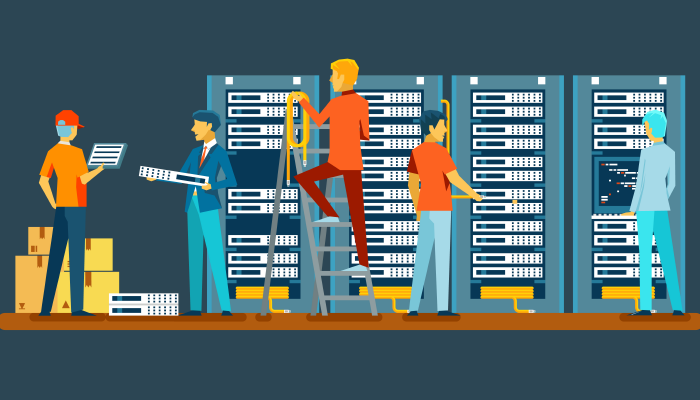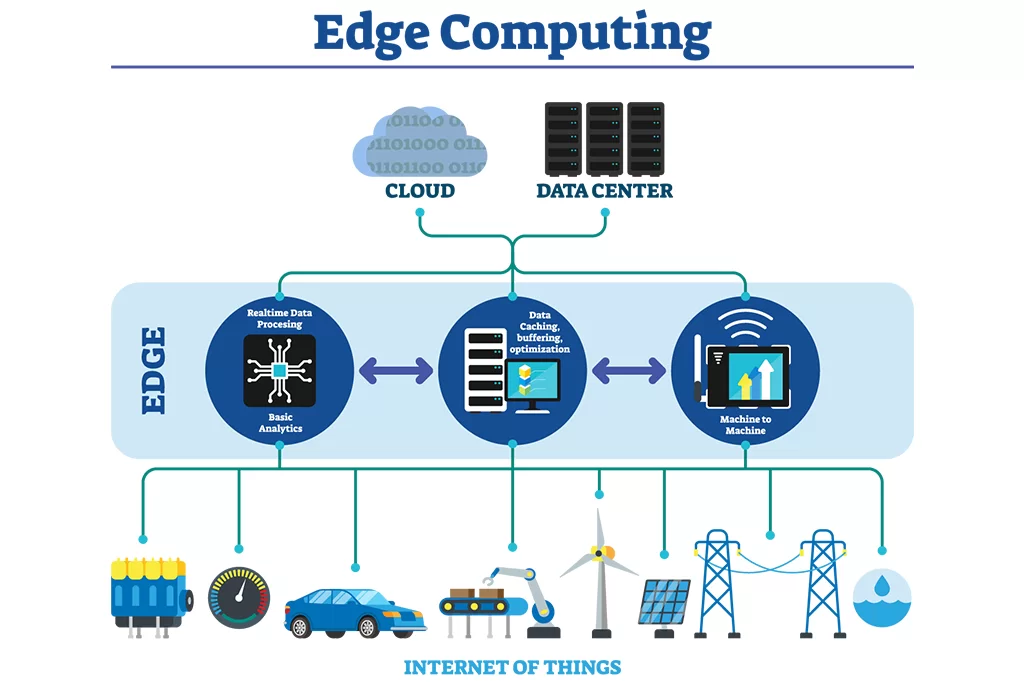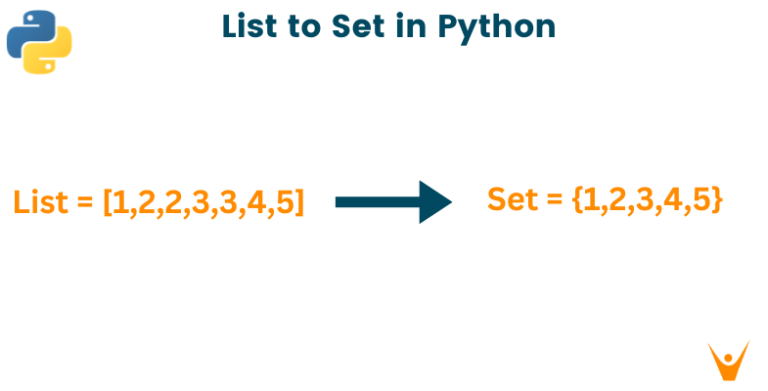Data Center Migration Trends: What to Expect in 2024 and Beyond
Data center migration is the process of moving data, applications, and infrastructure from one location to another, a vital undertaking for businesses aiming to harness the benefits of cloud computing and hybrid cloud solutions.
Despite its significance, this task is far from simple and presents numerous challenges and risks, including data loss, compatibility issues, performance decline, and security breaches. Consequently, businesses must meticulously plan and execute their data center migration projects, incorporating the latest trends and technologies to ensure success.
Trend 1: Data Lakehouses
A data lakehouse is an innovative data architecture that merges the advantages of both data lakes and data warehouses. Data lakes store extensive amounts of unprocessed and unstructured data for scalable storage and processing. On the other hand, data warehouses are structured databases designed for swift and dependable data analysis and reporting. The integration of data lakehouses incorporates features like governance, ACID compliance, and transactional capabilities into data lakes, facilitating scalable data and AI operations.
Some examples of data lakehouse platforms are Databricks, Snowflake, and AWS Lake Formation. These platforms allow businesses to store, manage, and analyze their data in a unified and secure environment, without compromising on performance or flexibility. Data lakehouses can support various use cases, such as data science, machine learning, business intelligence, and real-time analytics.

Data lakehouses offer many advantages, such as:
- Reducing the complexity and cost of data management and integration
- Improving the quality and consistency of data across different sources and formats
- Enhancing the scalability and elasticity of data storage and processing
- Enabling faster and more accurate data insights and decision making
However, data lakehouses also pose some challenges, such as:
- Requiring a high level of technical expertise and resources to implement and maintain
- Facing potential compatibility and interoperability issues with legacy systems and applications
- Ensuring data security and compliance with regulatory and ethical standards
Trend 2: Cloud Migration
Cloud migration is the process of moving data, applications, and infrastructure from on-premises or colocation data centers to the cloud. It has been accelerated by the COVID-19 pandemic, which has forced many businesses to adopt remote work and digital transformation. According to a survey by Flexera, 59% of enterprises expect their cloud usage to exceed their plans due to the pandemic.
Cloud migration offers many benefits for businesses, such as:
- Saving costs by reducing the need for hardware, maintenance, and energy consumption
- Increasing agility by enabling faster and easier deployment and scaling of resources and services
- Fostering innovation by providing access to the latest technologies and tools
- Enhancing resilience by improving the availability and reliability of data and applications

However, cloud migration also involves some challenges and risks, such as:
- Losing data or compromising data quality during the migration process
- Facing compatibility and performance issues with cloud-based applications and services
- Exposing data and applications to cyberattacks and breaches
- Complying with data privacy and security regulations and standards
Trend 3: Data Center Migration Services
Data center migration services encompass professional assistance for businesses undertaking data center migration projects. These services offer a range of functions, including consultation, design, implementation, testing, and ongoing support. Their overarching goal is to streamline the migration process, leading to efficient outcomes and cost savings for businesses.
IBM, Accenture, and Wipro are notable service providers for data center migration. With their wealth of experience and expertise, they deliver tailored and thorough solutions across diverse industries and scenarios. These services address multiple aspects of data center migration, providing valuable assistance to businesses in the process:
- Analyzing and evaluating their current and future data and application needs and goals
- Designing and developing a data center migration plan and strategy
- Implementing and executing the data center migration process
- Testing and validating the data center migration results and outcomes
- Providing ongoing support and maintenance for the data center migration

Data center migration services provide numerous advantages for businesses:
- Utilizing the expertise of specialists in this field
- Enhancing the effectiveness and quality of the migration process
- Minimizing the risks and errors associated with migration
- Optimizing the performance and security of data and applications.
However, they also pose some challenges for businesses, such as:
- Selecting an appropriate service provider for migrating your data center
- Fostering effective communication and collaboration with the chosen provider
- Overseeing the project and budget management for the data center migration
- Ensuring compatibility and interoperability of data and applications with the migration service provider
Trend 4: Edge Computing
Edge computing refers to a form of decentralized computing that facilitates quick, efficient, and immediate processing and analysis of data at the network’s edge. This approach minimizes data transmission and storage expenses while enhancing user satisfaction and experience. Additionally, edge computing is versatile, supporting applications like IoT, AR/VR, gaming, and autonomous vehicles.
Edge computing offers many opportunities for businesses, such as:
- Expanding the reach and coverage of data and applications
- Enhancing the scalability and elasticity of data and applications
- Enabling faster and more accurate data insights and actions
- Supporting new and emerging technologies and trends

However, edge computing also presents some challenges for businesses, such as:
- Securing and protecting data and applications at the edge
- Ensuring the reliability and availability of data and applications at the edge
- Managing and monitoring data and applications at the edge
- Integrating and coordinating data and applications at the edge and the cloud
Conclusion
Data center migration plays a crucial role for businesses aiming to remain competitive and up-to-date in the digital age. This strategic move can enhance data and application performance, efficiency, and security, ultimately aiding in the accomplishment of business goals. Nevertheless, it is a intricate and demanding process, necessitating thorough planning and execution, incorporating the latest trends and technologies.
If you are interested in learning more about data center migration , or need help with your project, you can contact us at OnextDigital. We have a team of experts and specialists who can help you with your data center migration needs and goals. We can help you design, develop, implement, optimize, and ensure a smooth and successful data center migration. Contact us today and get a free consultation and quote for your project.




